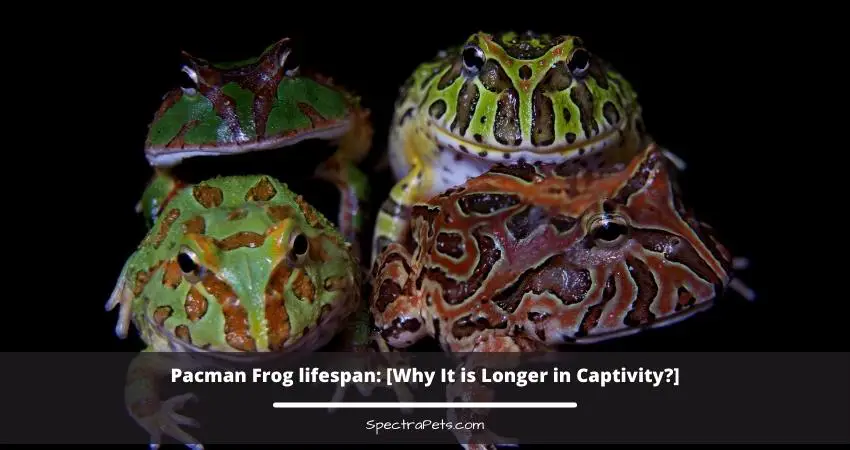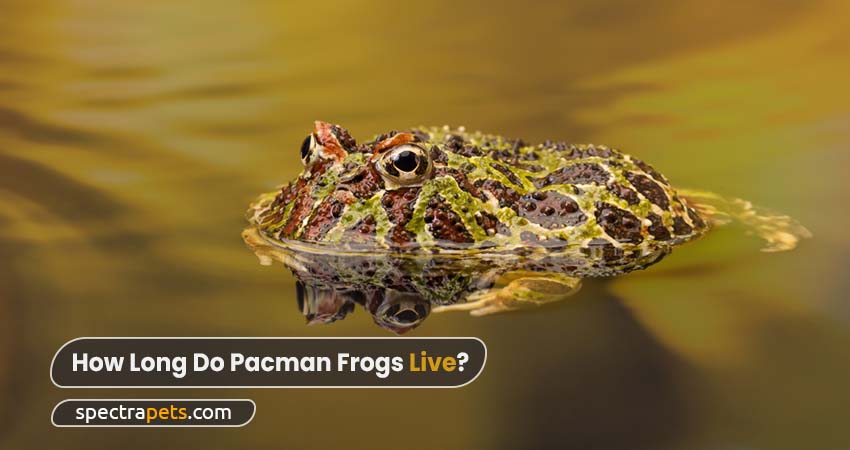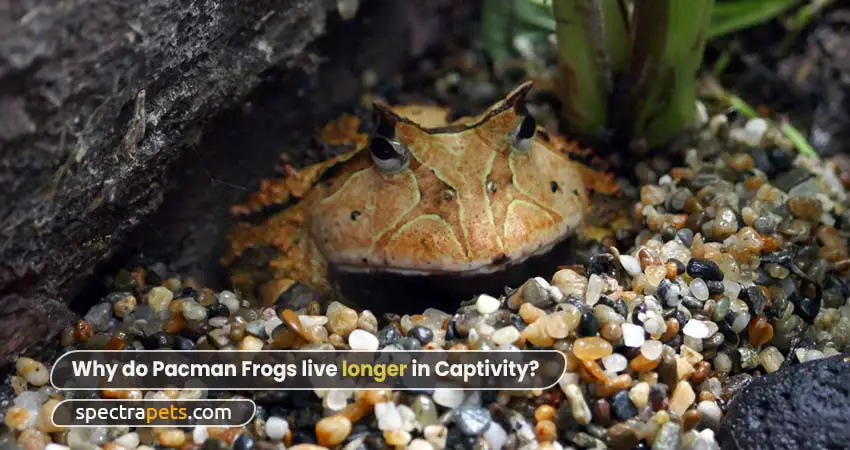Pacman frogs, scientifically known as Ceratophrys, are a genus of horned frogs native to South America. Recognized for their round bodies and oversized mouths, reminiscent of the beloved video game character Pac-Man, these fascinating amphibians have become popular exotic pets worldwide. Yet, one characteristic of these creatures that particularly stands out is their unusually extended lifespan when held in captivity.
Research conducted by the American Society of Ichthyologists and Herpetologists indicates that while Pacman frogs have an average lifespan of about 4 to 6 years in the wild, captive individuals can exceed a decade, with some even reaching the age of 15. This disparity between natural and domestic lifespans underscores the unique adaptability of these creatures and the specific conditions within captivity that enhance their longevity.
This guide will provide an in-depth analysis of these factors, exploring the diet, genetics, environment, and care practices that contribute to the increased lifespan of Pacman frogs in captivity.

What Is the Average Lifespan of a Pacman Frog in the Wild?
When in their natural habitats—comprising humid forests and marshy areas in South America—Pacman frogs (genus Ceratophrys) have a life expectancy of roughly 4 to 6 years. They face many threats, from predators to harsh weather conditions, often leading to a comparatively shorter lifespan than their captive counterparts.
Variations in lifespan among wild populations can be attributed to numerous influences, including food availability, genetic factors, and disease prevalence. Each of these elements constitutes a part of the Pacman frog’s survival puzzle.

How Does the Lifespan of a Pacman Frog Change in Captivity?
In stark contrast to the wild, captive Pacman frogs can lead incredibly long lives. It is not unusual for a well-cared-for Pacman frog to reach or exceed the age of 10 years in captivity, with some documented cases surpassing 15 years.
This significant increase in longevity can largely be traced back to the controlled environment that captivity offers. Absent from their natural threats, and with a consistent food supply and diligent care, these frogs can live notably longer. Yet, this isn’t merely a matter of subtracting the challenges of the wild. There are several other factors at play in this equation, some of which we will delve into below.
Why do Pacman Frogs live longer in Captivity?
As I mentioned in the intro, Pacman frogs live for around 15-20 years in captivity. But why do they live for so long when kept captive? The reason is when these frogs live in the wild, they have to face predators, competition for food, and diseases to deal with, which shortens their lifespan significantly.
But when the Pacman Frogs are kept as pets, neither they have to face predators nor do they need to worry about competition from other animals when it comes to their food. As a result, their lifespan doubles, triples, or even in some cases, quadruples.

What factors contribute to the long life of Pacman Frogs in captivity? Let’s take a look
1. Having a proper-sized tank
Unlike pets such as cats and dogs, you can’t have Pacman frogs out and about. They need to be housed in a tank, and this tank should be of a particular size to ensure their long life. You don’t need a large tank for a Pacman frog since they are quite inactive and tend to sit in a place for a long time. A tank of 10-20 gallon size is adequate for them.
Since the frogs come from humid conditions in South America, the tanks need to have proper humidity for their comfort. Having soil with sphagnum moss will help in retaining proper humidity in the tank. Also, make sure there is a dish with a little water for the frogs to soak themselves. The water must not be above their face level since these frogs can’t swim well and can drown easily.
The height of the tank isn’t that much of an issue. The Pacman frogs can’t climb and are inactive, they aren’t inclined to climb either. So the height of the tank can be low without any problem.
2. Having the right conditions
After ensuring the frog is housed in a proper tank, it’s time to make sure that its living conditions are suitable for it as well. As mentioned earlier, the frog comes from a place that is hot and humid. So, the tank’s heat and humidity have to be on point for it to survive for a long time.
The temperature of the Pacman frog tank has to differ during the day and the night. During the day, the temperature should be around 29 degrees celsius while the night temperature should be 18 degrees Celsius. The bulb that provides the heat and light should be on any one side of the tank so that if the heat becomes too much, the frog can escape it by changing its position. Using heat pads is a big no-no due to the frogs’ habit of digging deep into the soil.
The water used in the tank must not have any chlorine in it. Because the frogs absorb water with the help of their skin, the chlorine will cause skin diseases in them.
The humidity of the tank should be around 60-80 percent at all times. It can be easily maintained by having the moss, wet substrates, and misting the tank daily.
3. Providing a proper diet
Pacman frogs are voracious eaters that only eat other animals, which means they are carnivorous. Nothing is safe from these frogs if they get their huge gaping mouths around it. Their diets include insects, worms, small fish, and even mice. Make sure not to overload the tank with food as the insect or other animals will contaminate the tank.
Just because the Pacman frogs can eat anything, doesn’t mean they should. There are some things that you must not feed your frog. These include wax worms which produce excessive amounts of fat, mealworms because they cause various digestive issues, and giant mealworms that have hormones that harm the frog. Other animals that shouldn’t be fed to the frogs are scorpions as they can kill the frog with their venom and butter worms.
You don’t have to feed your adult frog every day. If you have a juvenile frog, then daily feeding is necessary, but for an adult frog, feeding it once every 4 to 6 days is enough. Also, the size of the insects, worms, or mice must not be larger than the frog itself.
4. Not handling them
Frogs are not cats or dogs. While that may not be something that needs to be stated, people tend to expect cuddles while owning frogs. Don’t ever do that as frogs are not meant to be cuddled.
Frogs have very thin skin. So if they are handled often, their skins will get damaged and they’ll die. So don’t handle the frogs unless you have to. Also, handling a frog isn’t very comfortable either, so there’s no point in doing so anyway.
If you still want to cuddle then look into this article for a few species that are not much afraid of handling. Be cautious though!
5. Treating diseases as soon as possible
Usually, if the Pacman frogs are kept in perfect conditions, they don’t contract any diseases. But you can never be too perfect. That’s why some diseases are found in frogs. These diseases are Obesity, Impaction, Toxic out syndrome, Metabolic Bone disease, and infections caused by various bacteria. As soon as the symptoms of these diseases appear, they have to be treated.
Final Words
Having a Pacman Frog as a pet can be very rewarding as they have fewer requirements than traditional pets such as felines or canines. But due to their short lifespan in the wild, a lot of people have cold feet.
But since now you know how long pacman frogs live, you can set up favorable conditions and try to keep your friend with you as long as you can!
